4 Days in Jerusalem
“So, when travelling to Israel, how long do you need to spend in Jerusalem?” This is a question we’re asked constantly, in our role as tour operators in Israel, and the fact is, however much time you have, invariably you’re going to long for more. That’s because Jerusalem is quite extraordinary - a city that’s thousands of years old, with every crevice of its Old City walls oozing history. Home to three religions, whether or not you’re a believer, you’re going to find it hard not to be moved after you’ve walked the streets here.
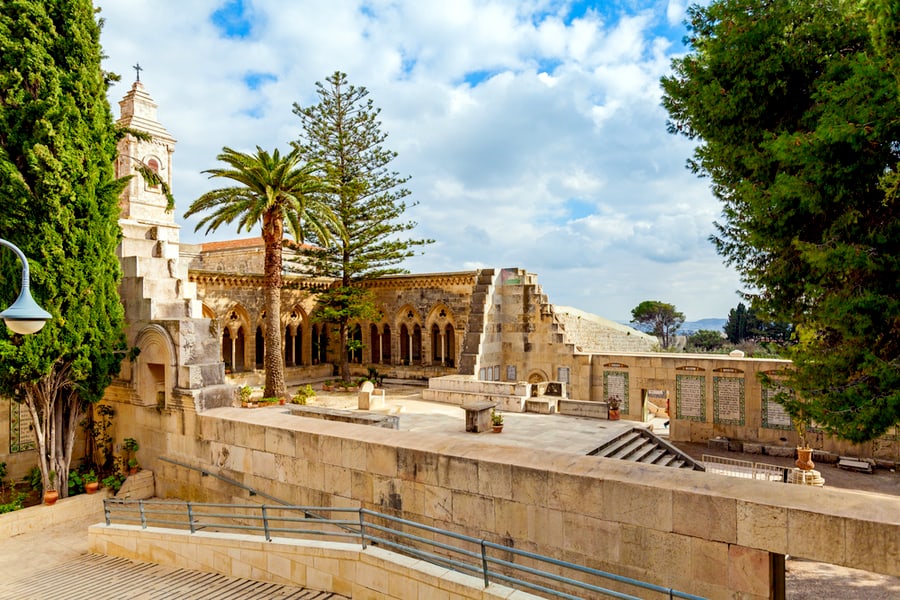
The Church of the Pater Noster, Mount of Olives, Jerusalem. Photo credit: © Shutterstock
Jerusalem has it all, you see. Historical and archaeological sites, museums, religious landmarks, attractions for kids, breathtaking views and restaurants. Many ‘Yerushalmis’ (the Hebrew word for Jerusalem residents) will tell you that they’re constantly discovering new things in their city. And as for the Old City - well, it might be small (less than one square kilometre) but at every twist and turn there’s something to turn your head.
Jerusalem is many things - beautiful, complicated, intense, troubled, breathtaking, magical, exhilarating and awe-inspiring - and a must-visit city for anyone visiting Israel. But most tourists visiting the Holy Land have a limited time frame, so what are the top 10 attractions in Jerusalem?
Today, we’re going to look at a potential Jerusalem itinerary for someone planning on spending four days in the Israeli capital, a guide of what to see and do in Jerusalem. Four days, in our opinion, is a good introduction…and hopefully, you’ll enjoy it so much, you’ll want to return.
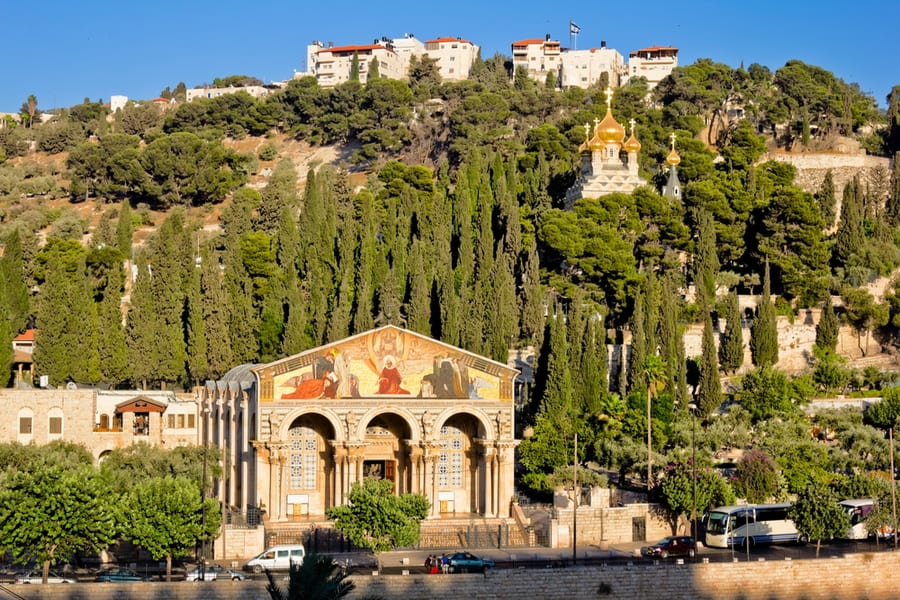
The Church of All Nations, Mount of Olives, Jerusalem. Photo credit: © Shutterstock
Day 1. Arrival and looking around
Today’s a day for getting settled in, perhaps having a stroll in downtown Jerusalem, grabbing some dinner at one of the city’s excellent restaurants then getting a good night’s sleep at one of the best Jerusalem hotels you pre-booked. If you have the time and energy, we’d definitely recommend a visit to the Israel Museum, which is close to the famous Jerusalem landmark of the Knesset (the Israeli Parliament).
Within the museum, you’ll find (amongst other things) fine art, a sculpture garden, a model of Jerusalem at the time of the Second Temple and the Dead Sea Scrolls, discovered in the 1940s in the Judean desert and now housed in a stunning purpose-designed building. For dinner, why not treat yourself and book a table at the Mamilla rooftop restaurant, close to the Jaffa Gate? You can enjoy magnificent views of the Old City whilst feeling a fresh Jerusalem breeze on your face.
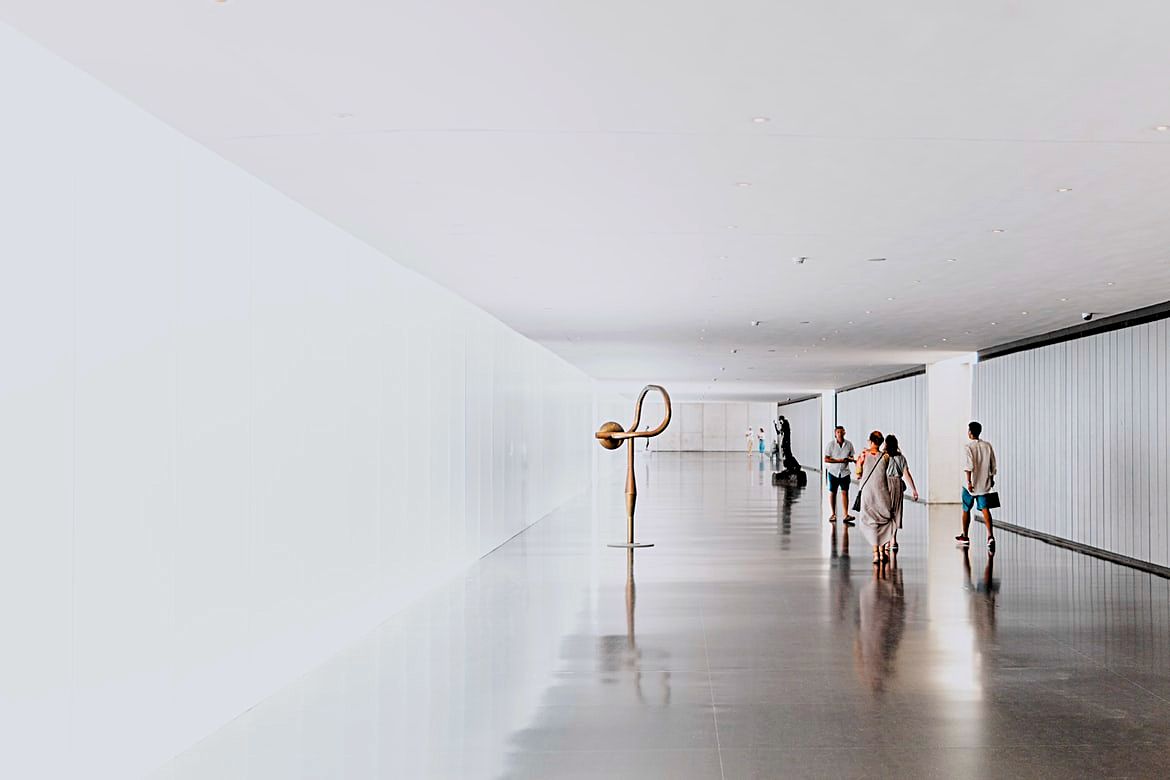
The inner corridor of Israel Museum, Jerusalem. Photo by Yanny Mishchuk on Unsplash
Day 2. Getting acquainted with the Old City of Jerusalem
Day two is all about Jerusalem’s Old City. It might be small but - trust us - if you see even half of what we’re suggesting, you’ll have sore feet by the day’s end. This tiny area is full of iconic landmarks and, depending on your focus, you can spend hours at just two or three of them. Holy sites in Jerusalem are everywhere you look, but here’s some you shouldn’t miss:
There are many churches in the Christian Quarter, the most famous of which is the Church of the Holy Sepulchre. Built on the site of Jesus’ crucifixion and resurrection, inside you can marvel at the magnificent architecture (the wooden carved doors at its entrance are original, dating back to 326 CE!) the Rock of Calvary, and various chapels (Roman Catholic, Greek Orthodox and Egyptian Coptic) in the magnificent complex.
If you want to walk in the footsteps of Jesus, follow the Via Dolorosa, stopping at the Stations of the Cross. Or visit the Church of St. John the Baptist - recognizable by its silver dome. The Lutheran Church of the Redeemer, built in 1898, offers services in English, German, Danish and Arabic.
The highlights of the Muslim Quarter have got to be the Suk (the Arab Bazaar) and Temple Mount. Wander the network of alleyways, shop for bargains and grab yourself a black coffee (flavoured with cardamom) and sit and watch the world go by, just soaking up the atmosphere. Whatever you want to take home with you can be found here, including local spices, soaps, embroidery, sweet treats, woodwork and all kinds of beautifully-decorated Armenian pottery.
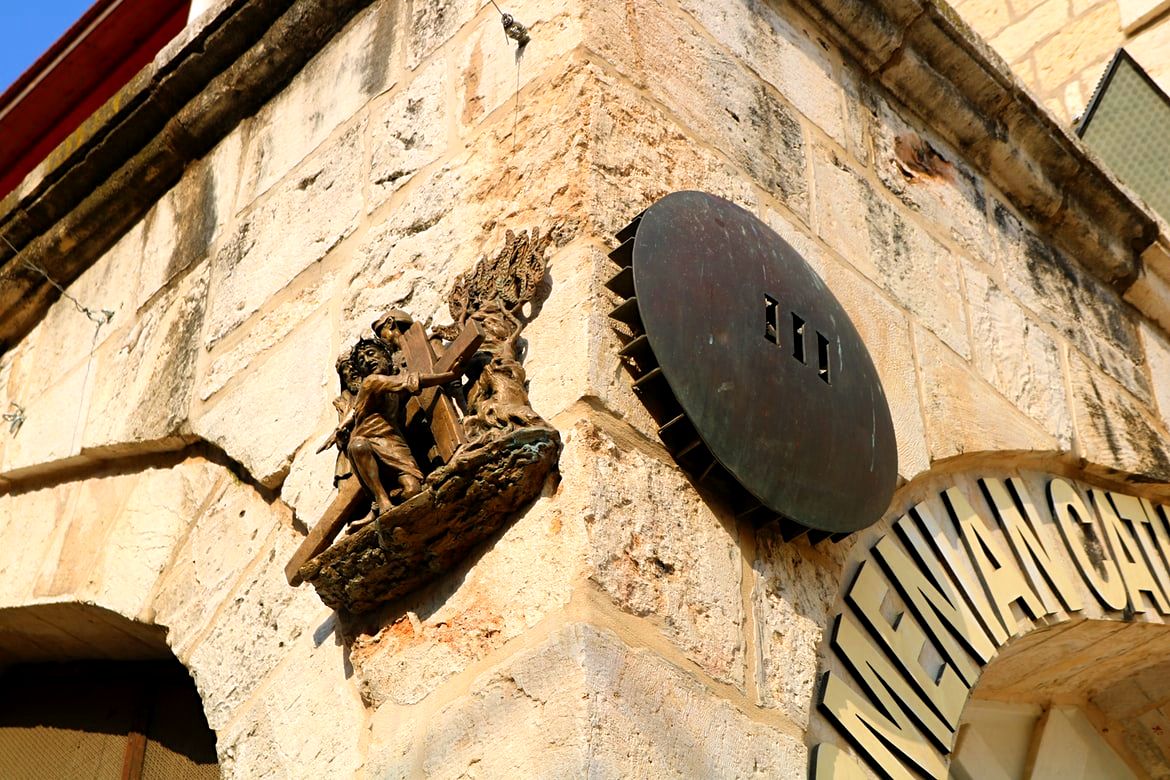
The third Station of the Cross, not far from the Ecce Homo, Jerusalem. Photo by Jorge Fernández Salas on Unsplash
Temple Mount, also known as Haram esh-Sharif, is dominated by the Dome of the Rock, built by the Umayyad caliphate in 691 CBE. One of the UNESCO World Heritage Sites in Israel, it is probably Jerusalem’s most famous landmark, because of its distinct golden dome. There are many things to see within the compound - fountains, prayer locations and arches - but access to non-muslims is limited so check in advance when visiting is possible, or take a Jerusalem Temple Mount & Dome of the Rock Tour with us, where an experienced guide can help you get the most out of the experience.In the Jewish Quarter, head first to the Western Wall (‘Kotel’ in Hebrew) which is all that is left of the Temple built by Herod the Great. Jews from around the world come to pray here and watching them touching the stones, silently, is a moving sight. For adventure lovers, you can take an underground tour of the Western Wall Tunnels or visit the Tower of David, an ancient Citadel close to the Jaffa Gate (housing a museum) and a symbol of Jerusalem.
Another popular area is around the Cardo, which was the main thoroughfare in Jerusalem in Roman times. Stretching from the Damascus Gate to David street, it was built in the Byzantine period, in 6 CE, and some of its columns have even been restored, so you really can go back in time as you stroll along. If all this is a bit overwhelming, and you’re not quite sure what to focus on, why not opt for a mix of everything with our Jerusalem Old and New Tour.
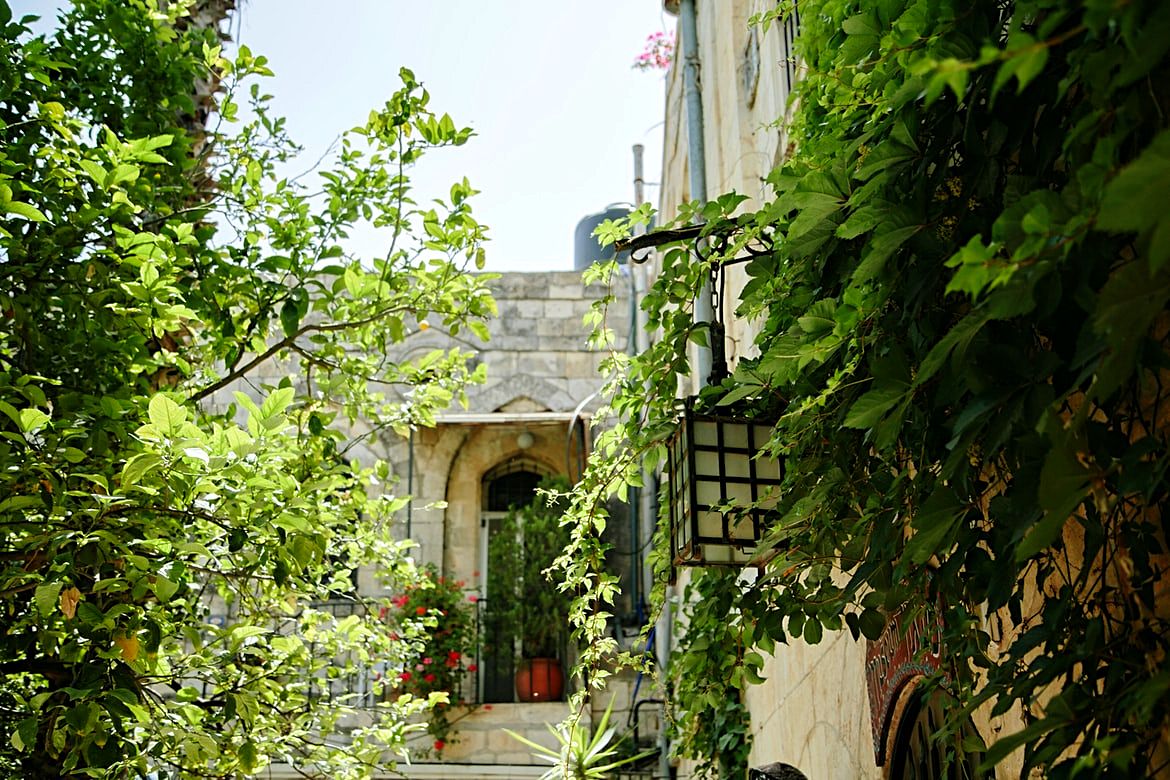
Christ Church, the Old City of Jerusalem. Photo by Big G Media on Unsplash
Day 3 - Mount of Olives and Mount ZionThe Mount of Olives lies east of the Old City, close to the Kidron Valley. There are a considerable number of holy sites there, including a number of impressive churches, so choose carefully!
Christian sites on the Mt of Olives
Augusta Victoria Hospital - this church hospital lies on the north side of the mount, offering specialised medical care. Within the complex lies the Lutheran Church of the Ascension, identifiable by its 50-metre high bell tower, as well as a meeting centre and cafe for pilgrims.
Church of Mary Magdalene - under the jurisdiction of the Russian Orthodox church since the 1920s, it was built in 1888 by Tsar Alexander III to honour his mother. The traditional design of the roof (popular in 17th century Russia) includes seven distinctive gilded domes.
Church of the Pater Noster is part of a Carmelite Monastery and on its walls are inscribed translations of the Lord’s Prayer in 140 different languages.
Dominus Flevit Church is a small Catholic Franciscan chapel, built on the ruins of a 5th-century Byzantine church. Its iconic design (tear-shaped and with its often photographed window) is down to the Italian architect Antonio Barluzzi.
Garden of Gethsemane - this is the spot where Jesus prayed before his betrayal by Judas Iscariot and subsequent arrest. Scientists have discovered that the olive trees in its garden are some of the oldest in the world - around 2,000 years!
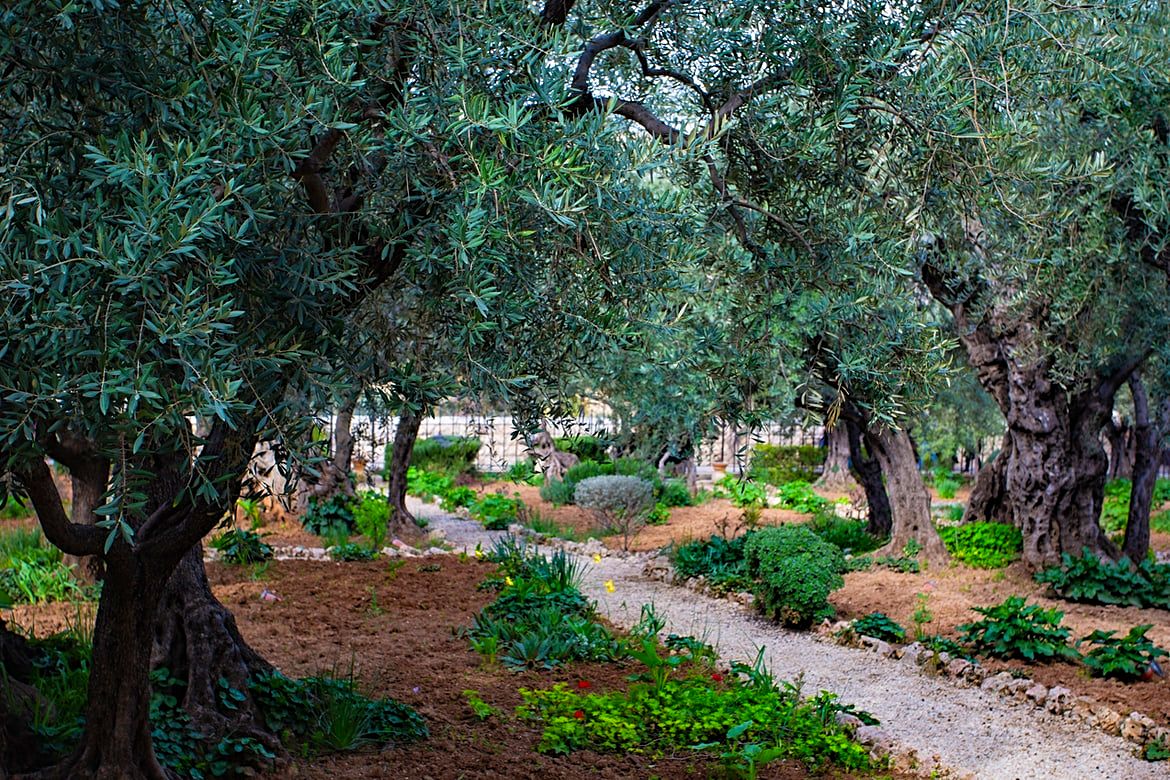
The Garden of Gethsemane, Jerusalem. Photo by Stacey Franco on Unsplash
Muslim holy sites on the Mt of Olives
The Mount of Olives is holy to Muslims, as they believe it is the site where the Kaaba (the black stone located in Mecca) will return, in order to be reunited with the rock inside the Dome of the Rock (the spot at which Muslims believe the world was created) There is the tomb of Rabi’a al Adawiya, this cleric who introduced Sufism into the world of Islam, as well as the tomb of Mujir ed-Din, a medieval historian.
Jewish holy sites on the Mt of Olives
Jewish cemetery - Mount of Olives is home to a historic area used as a burial ground for Jews since biblical times. Some of the most important Kings of the Hebrew Bible are buried here and according to Jewish tradition, this is the site at which the messianic era will be ushered in.
Tomb of the Prophets - according to tradition, this is where the last three Hebrew prophets are buried - Haggai, Zechariah and Malachi are buried.
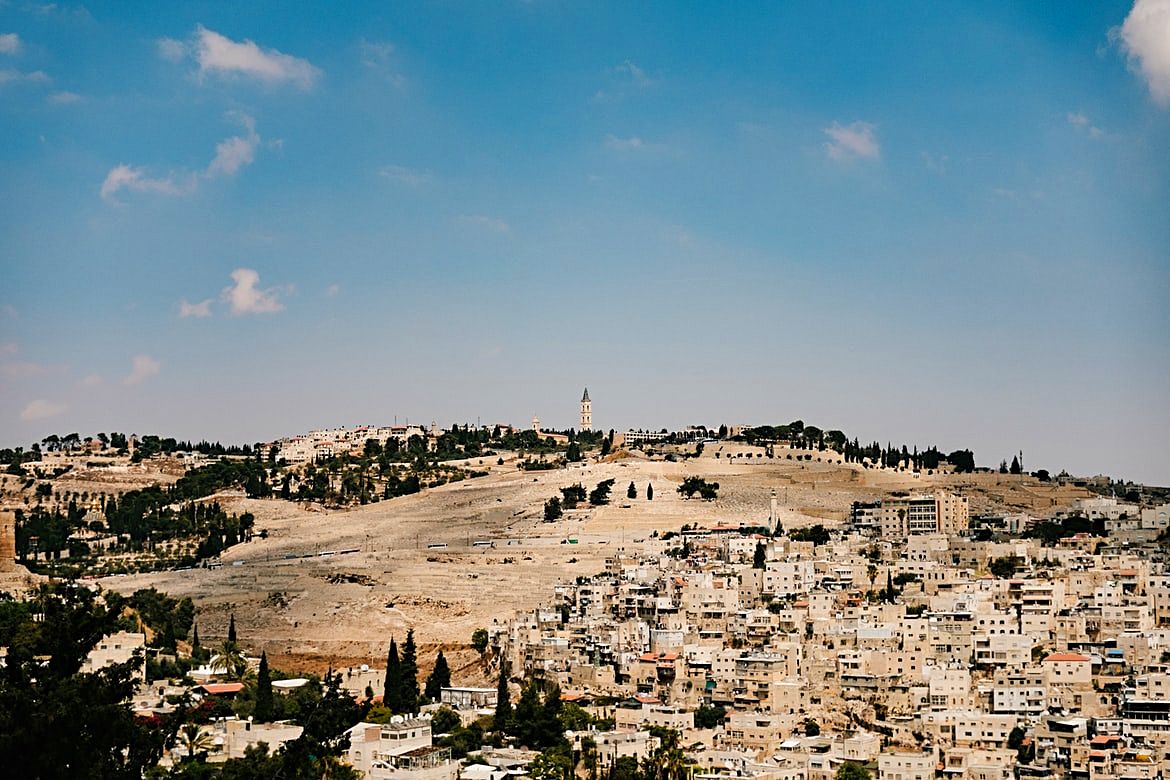
Mount of Olives, Jerusalem. Photo by Adam Kring on Unsplash
Visiting Mount Zion
This hill in Jerusalem, just outside of the Old City, is holy to Christians, Muslims and Jews and, in many senses, a metaphor for the entire Promised Land. Some of the sites you may want to explore on Mount Zion are:
Christian sites on Mount Zion
Dormition Abbey - run by a Benedictine Order, this Catholic Abbey marks the spot where Mary, the mother of Jesus, was said to have died. Built by Kaiser Willhelm II, it has a distinctive round shape, a cone-shaped dome and a magnificent mosaic floor.
The Protestant cemetery - established by Presbyterian missionaries, this is the final resting place of many Protestants, including Oskar Schindler. Made famous by the Steven Spielberg film, Schindler today is considered a righteous gentile by the State of Israel, for his heroism in saving 1,200 lives in the Holocaust.
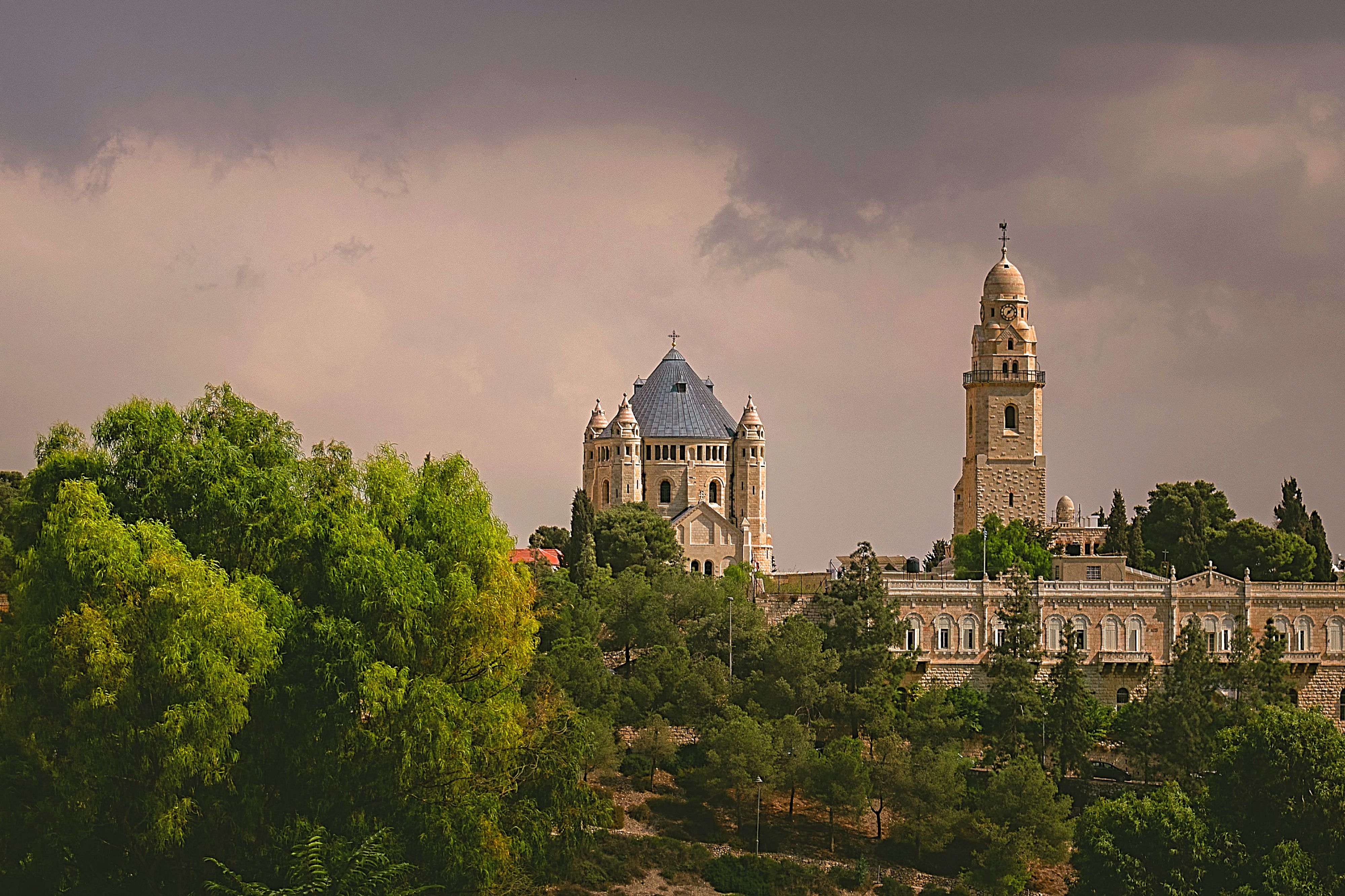
Dormition Abbey, Jerusalem. Photo by Levi Meir Clancy on Unsplash
Jewish sites on Mount Zion
King David's Tomb - sacred to Jews, this is the spot which is where it is believed David, the celebrated warrior King of Israel, is buried. The building in which it is housed is designed in Romanesque style and dates back to the time of the Crusades.
The Chamber of the Holocaust (‘Martef HaShoah’) - this small Holocaust museum was opened before Yad Vashem in 1949. The walls of the courtyard and passages are covered with plaques that resemble tombstones and erected as a monument to over 2,000 Jewish communities destroyed by the Nazis.
Muslim sites on Mount Zion
The Dajani Cemeteries - these three Muslim burial sites are owned by the Dajanis, historically one of Jerusalem’s most distinguished families. The Dajanis also own the compound where King David’s tomb is located (see above).
Our tip: if you have a particular interest in the Jerusalem Christian sites on the Mount of Olives, then why not join our Footsteps of Jesus tour? And don't forget about the dress code visiting Jerusalem holy sites.
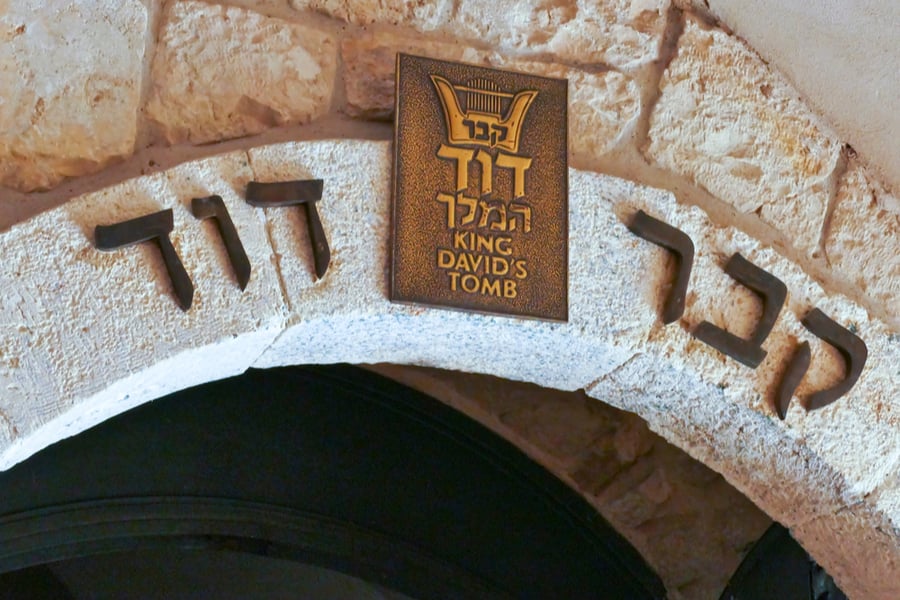
King David’s Tomb, Mount Zion, Jerusalem. Photo credit: © Shutterstock
As night falls, why not head back into central Jerusalem, towards the famous Mahane Yehuda Market on the Jaffa Road? Bustling and chaotic by day - beloved by locals as the best place to buy fruits and vegetables - at night it’s transformed into a cafe and bar venue, where you can grab a drink or have a bite. It’s incredibly atmospheric and - in our opinion - one of the best places to get a sense of what Jerusalem is all about.There’s also the rooftop restaurant at Notre Dame, close to the Damascus Gate, where you can take in breathtaking views of the Old City. They have ‘cheese platters’ which you can pair with fine wines, traditional Middle Eastern food and also steaks/seafood. If you arrive at sunset, you’ll be grateful you did so!
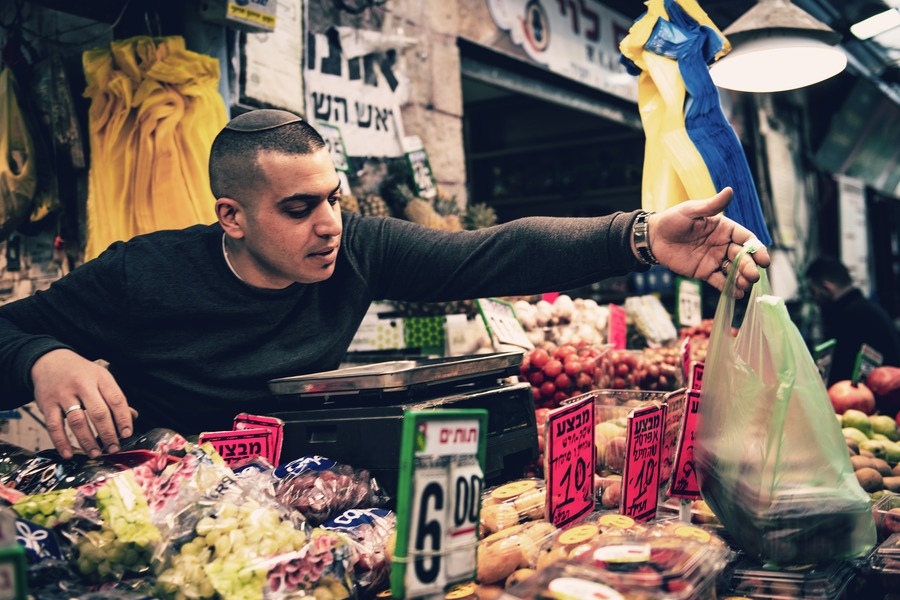
Man selling fruits at Mahane Yehuda Market, Jerusalem. Photo by Tim Mossholder on Unsplash
Day 4 - Your Choice
Today, we’re giving you a few different activity ideas, depending on your interests (and whether or not you’ll be taking kids along with you).
City of David - if you’re curious to know where it all began, then why not take a City of David Jerusalem Tour? The original settlement of Jerusalem, it offers a number of attractions, including archaeological experiences in Emek Tzurim national park, walking tours through underground water tunnels that date back 3,000 years and a nighttime show named ‘Hallelujah’.
Yad Vashem Holocaust Museum - this is Israel’s official monument/museum to those who perished in the Holocaust. Whilst not a ‘fun’ afternoon out, Yad Vashem is essential visiting for anyone interested in this dark period of Jewish history. The architecture of the museum is stunning and the Monument to the Children particularly moving. As solemn as it is, its emotional, historical and cultural significance cannot be underestimated.
Jerusalem Biblical Zoo - for anyone with kids (or anyone who just loves animals) this zoo is a fabulous attraction. The birds and animals all live in conditions that replicate their natural habitats - from the African Savannah to the tropical rain forests.
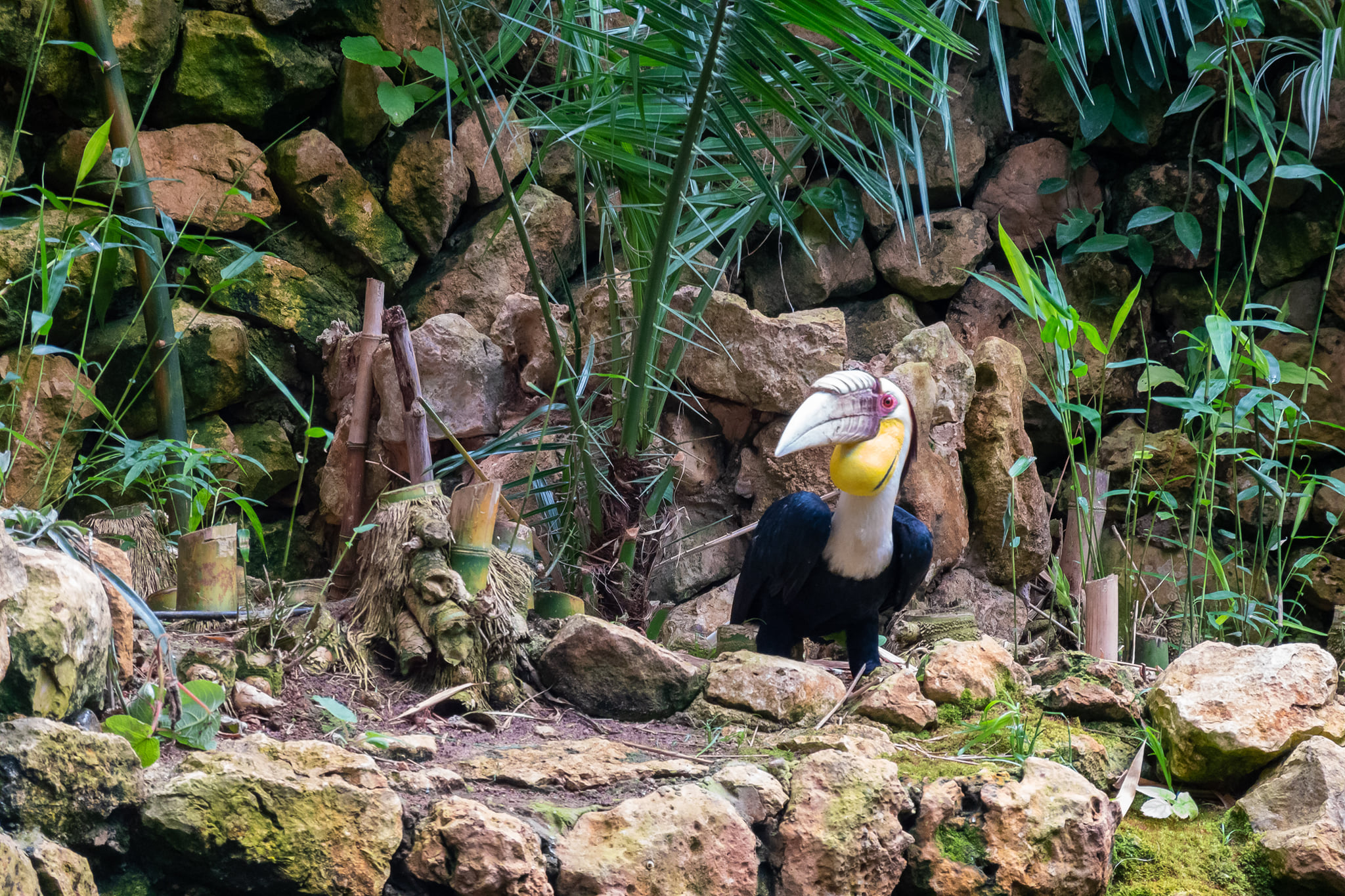
Jerusalem Biblical Zoo. Photo credit: © Dmitry Mishin
There’s also a ‘petting pool’ for youngsters and a children's zoo, where the kids can feed goats, sheep and rabbits. And just a short walk from the zoo is the Israel Aquarium, featuring all kinds of marine life from the Sea of Galilee, the Mediterranean Sea and the Red Sea.Before you settle into your last evening at your hotel, why not consider visiting the neighbourhood Ein Kerem for dinner? Located in southwestern Jerusalem, this charming hillside village is an oasis of greenery and one of the major Christian holy sites in Israel, since it is believed to be where John the Baptist was born.
Ein Kerem’s streets are narrow and charming, filled with cafes, boutique stores, artist galleries and independent jewellery workshops, which you can explore, before heading off to one of their several stylish restaurants. The perfect way to end your last night in Israel’s capital.
We hope this suggested Jerusalem itinerary is of help - and if you have less than four days to spare, why not try our 3-day classical Jerusalem package tour? In any event, however long you’re planning to spend in Israel’s capital, be prepared to be blown away…Happy travelling!
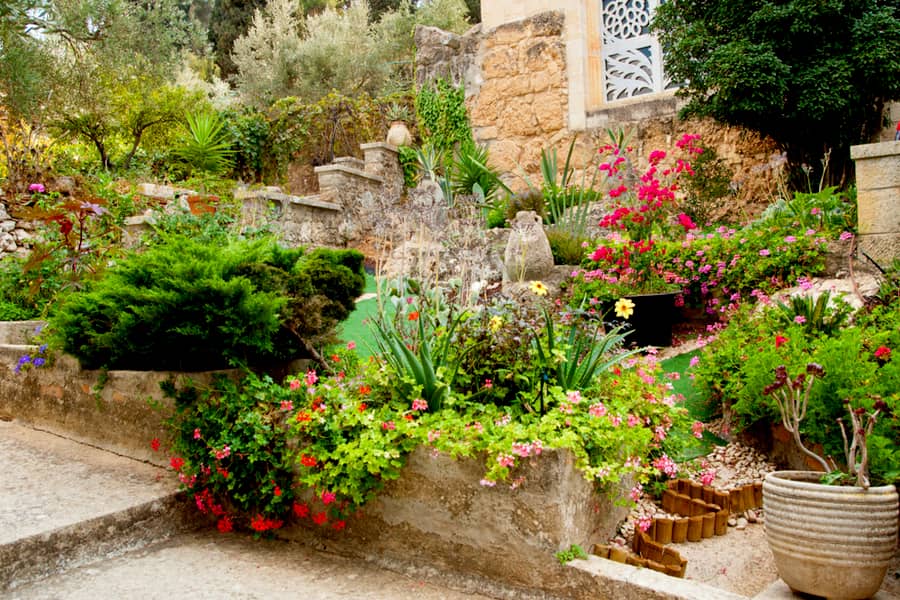
Convent of the Sisters of Zion, Ein Kerem, Jerusalem. Photo credit: © Shutterstock
 Login / Register
Login / Register
 Contact Us
Contact Us
 Certificate of Excellence
Certificate of Excellence Guaranteed Departure
Guaranteed Departure Low Prices Guaranteed
Low Prices Guaranteed 24/7 Support
24/7 Support




